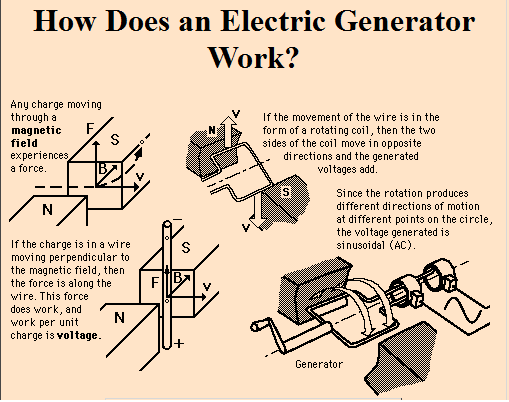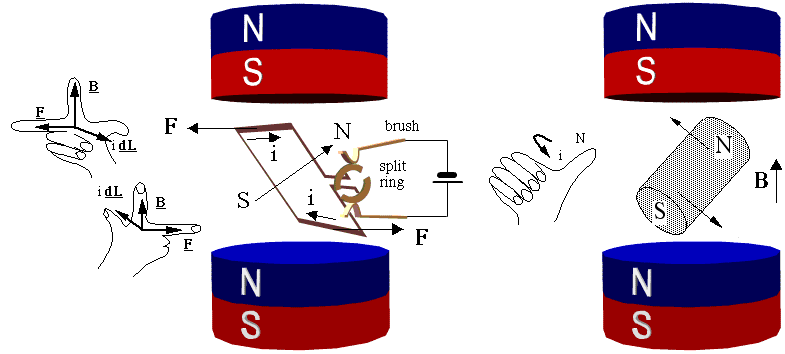Generator Physics
A generator is simply a device that moves a magnet
near a
wire to create a steady flow of electrons. The action that forces this
movement
varies greatly, ranging from hand cranks and steam engines to nuclear
fission,
but the principle remains the same. In an electrical circuit, the
number of
electrons in motion is called the amperage or current,
and it's measured in amps. The "pressure" pushing
the electrons along is called the voltage and is
measured in volts.

How an Electric Generator Works. Hyperphysics.

Basic Generator Physics. Physclips.